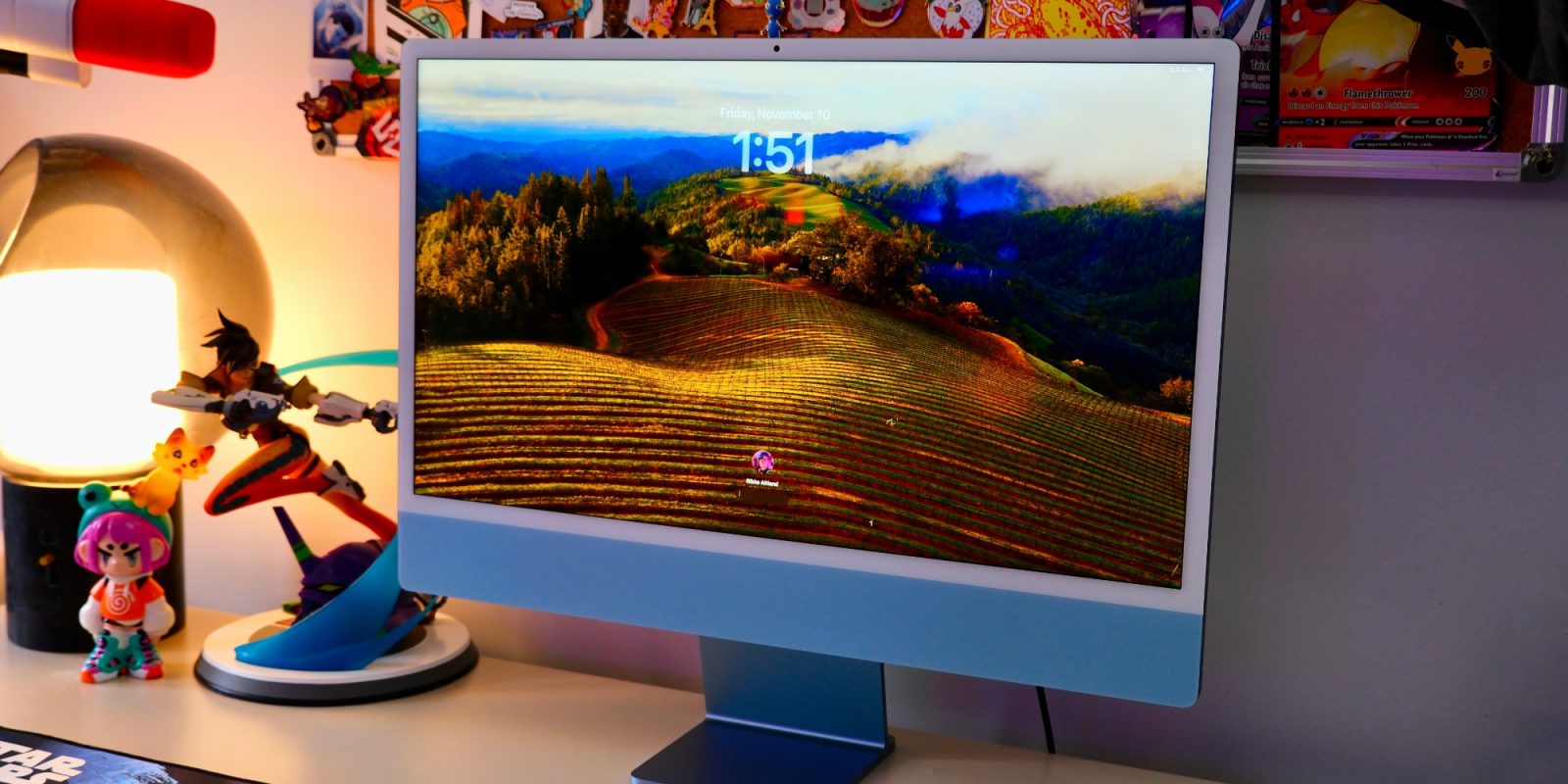

Apple @ Work is brought to you by Mosyle, the only Apple Unified Platform. Mosyle is the only solution that fully integrates 5 different applications on a single Apple-only platform, allowing Businesses to easily and automatically deploy, manage & protect all their Apple devices. Over 38,000 organizations leverage Mosyle solutions to automate the deployment, management, and security of millions of Apple devices daily. Request a FREE account today and discover how you can put your Apple fleet on auto-pilot at a price point that is hard to believe.
Back in October, Apple finally released an updated iMac. It was the first update since 2021, when Apple first transitioned the iMac line to Apple Silicon. The iMac has long been iconic for Apple’s lineup as it was symbolic of Steve Jobs’ return to Apple and the beginning of its current dominance in the marketplace. Without the iMac, there would likely be no iPhone. Although the iMac is considered a “consumer device,” it’s been very popular in business applications because of its self-contained design. That’s why the latest update has been somewhat perplexing to me.
About Apple @ Work: Bradley Chambers managed an enterprise IT network from 2009 to 2021. Through his experience deploying and managing firewalls, switches, a mobile device management system, enterprise grade Wi-Fi, 100s of Macs, and 100s of iPads, Bradley will highlight ways in which Apple IT managers deploy Apple devices, build networks to support them, train users, stories from the trenches of IT management, and ways Apple could improve its products for IT departments.

The external display problem
One of the glaring problems with the original Apple Silicon Macs using the M1 chip was the inability to run more than one external display. While this might seem like an edge case for those looking at it from a consumer perspective, for business users – this was a big problem. Apple solved it with the M2 lineup of chips, as there were models that could support 2+ external displays. With the iMac M3, this problem still exists.

Apple limited the new iMac to the standard M3 chip. There is no option to upgrade to the M3 Pro and the M3 Max that the MacBook Pro offers, so the options for additional external displays are limited.
What are the use cases?
Outside of developers, designers, and finance teams wanting three displays, the iMac used to be popular for event venues looking for a streamlined computer to power presentations. One of the most popular applications for event facilities is ProPresenter. I’ve used it for over ten years in various capacities, and it’s a fantastic tool. While it started for churches, it’s also expanded to countless other live events. It makes incredible use of the two external displays. One of them is the output that the guests would see, but the third monitor runs a “confidence monitor/stage display” that can contain a customized interface for speakers with text, timing, etc.
Can these use cases leverage a Mac Mini or Mac Studio? They can. They can also use a MacBook Pro as well. That’s what most people have used since Apple started the Apple Silicon. Why is the iMac ideal here? It has the power of a desktop computer, modular components (separate keyboard and mouse), and a large (ish), self-contained display. Compared to the Mac Studio or Mac Mini, you’ll have a much cleaner environment that is significantly easier in portable situations (think concerts, etc).
Why did Apple limit the iMac to the M3?

Apple loves to offer upsells. They love tag lines like “Starts at $1299” when there are options to upgrade it to $3000. This is why they are still selling 8GB of RAM in 2024. So there are only two reasons that Apple might have limited the 2023 iMac to the standard M3 chip: something about the design caused a heat issue with the upgraded M3 chips, or they are trying to keep the iMac focused as a consumer-only device.
Either way, it’s clear that business users love the iMac, so limiting the device to the standard M3 chip is a mistake. If Apple needs to retool the design to support the upgraded chips, they have long enough to do that. Let’s hope they don’t wait until 2025 to offer two external displays on the iMac. It’s a fantastic device – check out 9to5Mac’s hands-on review.
Apple @ Work is brought to you by Mosyle, the only Apple Unified Platform. Mosyle is the only solution that fully integrates 5 different applications on a single Apple-only platform, allowing Businesses to easily and automatically deploy, manage & protect all their Apple devices. Over 38,000 organizations leverage Mosyle solutions to automate the deployment, management, and security of millions of Apple devices daily. Request a FREE account today and discover how you can put your Apple fleet on auto-pilot at a price point that is hard to believe.
FTC: We use income earning auto affiliate links. More.







